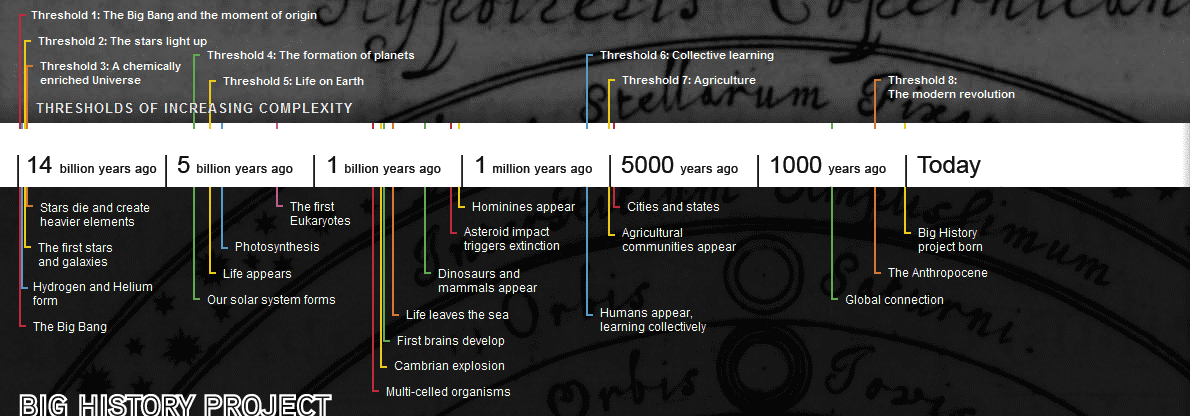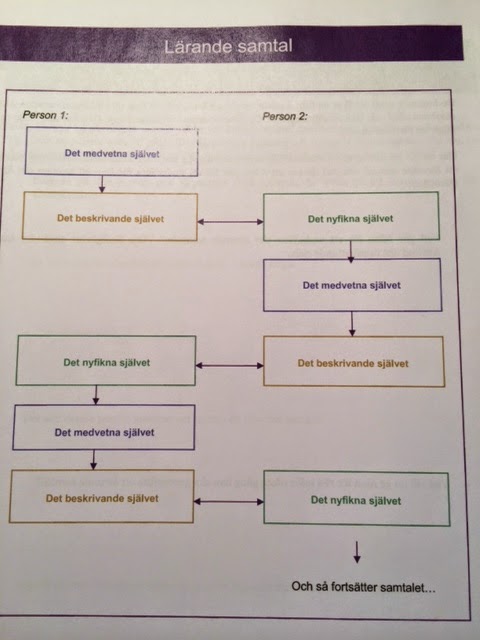The big history of our world - from TED
From TED, I found this astonishing talk by David Christian (picture from global patriot.com):
In big history, you define a number of threshold moments, each of them creating slightly more complex things. Each stage is magical because it creates the impression of something utterly new appearing almost out of nowhere in the universe.
These are the threshold stages, from a big history perspective:
The Big Bang
The Big Bang happens 13,7 billion (miljarder) years ago. The universe is tiny; it´s smaller than an atom. It contains everything that´s in today´s universe.
The stars light up
In the beginning there were only Hydrogen (H) and Helium (He). Eventually gravity started to build clouds of hydrogen and helium atoms. When the center of the clouds due to increased gravity crossed the threshold temperature of 10 million degrees, protons start to fuse, there´s a huge increase of energy. Bam - we have our first stars. This was about 200 million years after the Big Bang.
New chemical elements
When very large stars die they create temperatures so high that protons begins to fuse in all sorts of exotic combinations, to form all the elements of the periodic table.
Earth and the solar system
Around young stars, all these element combine, they form particles, they form dust motes, they form rocks, they form asteroids and eventually they form planets and moons. Rocky planets create more diverse environments. Our solar system was formed 4,5 billion years ago.
Life on Earth
Molecules combine to form living organisms. These are the goldilocks conditions for life:
- The right amount of energy
- Diverse chemical elements
- Liquids
Life introduces an entirely new trick, DNA, used for containing information about how to make living organisms. DNA copies itself, and once in every billion rungs, there tends to be an error. Some of those errors work. So DNA´s learning and it´s building greater diversity and greater complexity. We can see this happening over the last four billion years. From about 700 million years ago, multi-celled organisms started to appear, like fungi, fish, plants, and then the reptiles and dinosaurs. 65 million years ago, an asteroid landed and made dinosaurs distinct.
The appearance of our species
Homo Sapiens appeared about 200 000 years ago. What makes humans different is human language. We are blessed with a system of communication so powerful that we can share what we have learned with such precision that it can accumulate in the collective memory as collective learning. And that´s why we are so creative and so powerful.
Agriculture
Then 10 000 years ago, exploiting a sudden change in global climate with the end of the last ice age, humans learned to farm. Farming was an energy bonanza and human population multiplied.
The modern revolution
From about 500 years ago, humans began to link up globally through shipping, trains, telegraph,and finally the internet. Now we seem to form a single global brain of about seven billion individuals. That brain is learning at warp speed. We have also stumbled on another energy bonanza on fossil fuels… So fossil fuels and collective learning together explain the staggering complexity we see around us.
See the TED talk here, or via YouTube down below:



Kommentarer
Skicka en kommentar